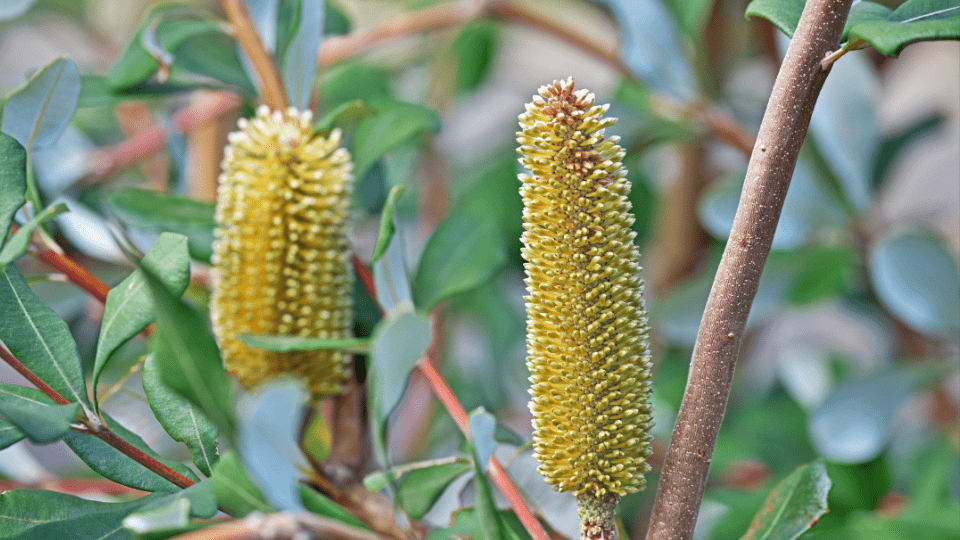with Jenny Gursanscky
Kabi Kabi country
Jenny and her partner started their native Garden for Wildlife journey at Moffat Beach in 2017. Replacing the front lawn with native species over time, they have now created a beautiful coastal garden habitat in a suburban front yard that is attracting a diversity of wildlife.
“We didn’t like lawn much as it needs maintenance and in terms of biodiversity it really doesn’t do much.” explains Jenny.
“So we started digging it up and replacing it with local native species. It amazes me how well and how quickly things have grown with very little assistance!
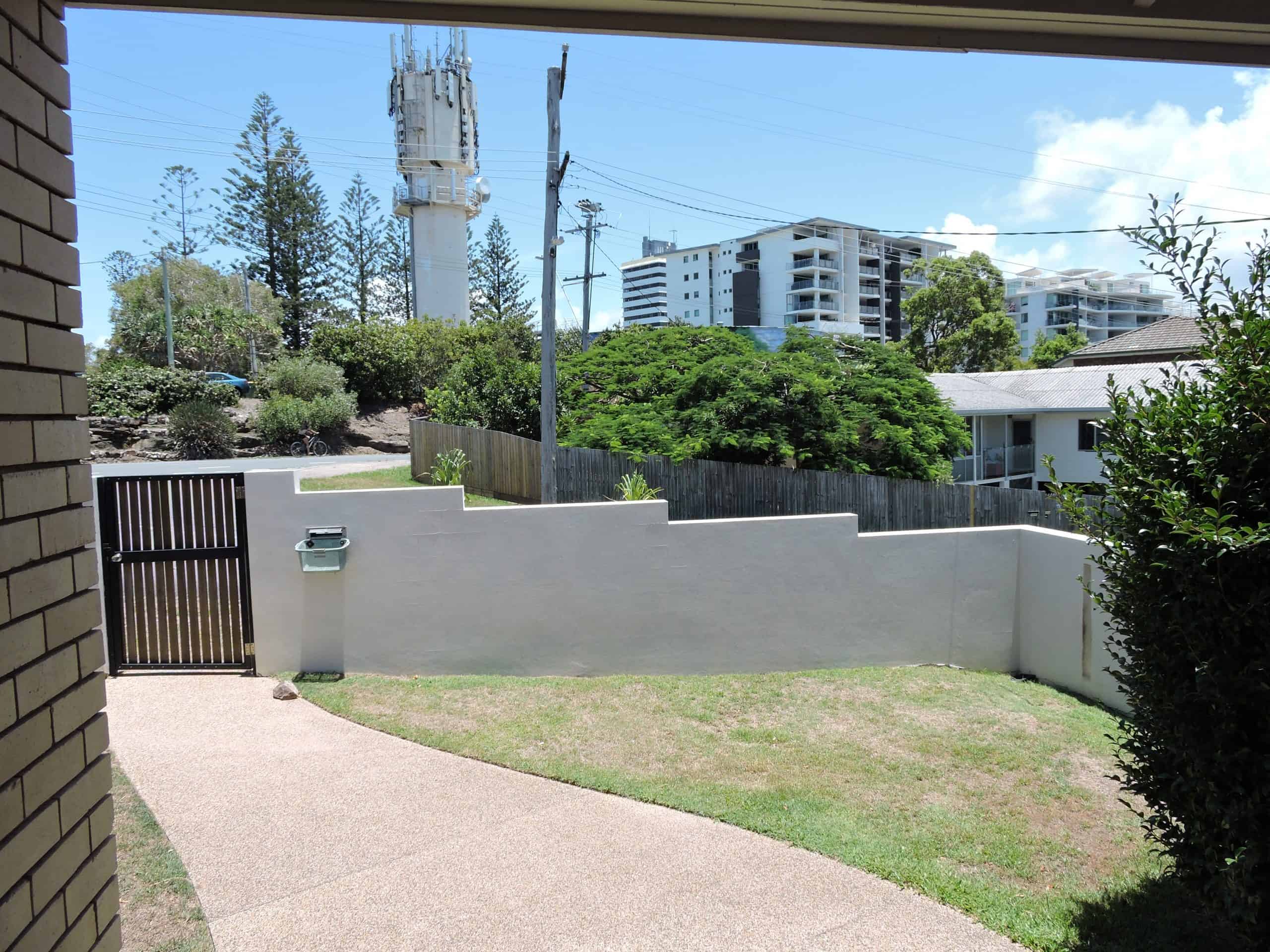
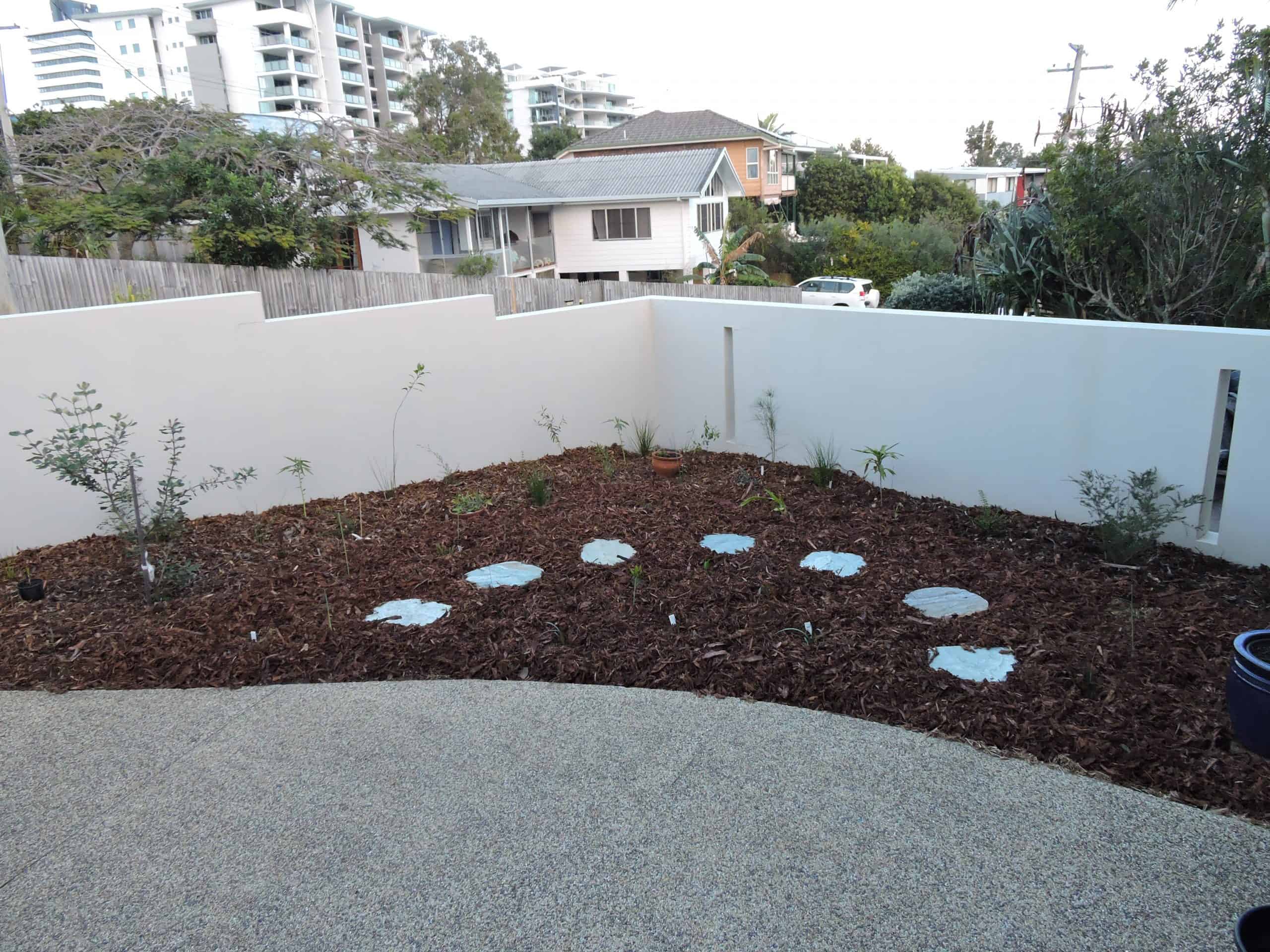

“With the garden, one of the things we wanted was privacy from the street in an area that is quite exposed, we wanted to cut down traffic noise a bit, so chose species that would help with that as well as provide some privacy from our neighbouring property.
“For species selection, we looked at what was growing naturally around the area in local reserves, and this helped us to understand what would grow well here. The GroNATIVE app was helpful to make decisions and check what might grow here too.”
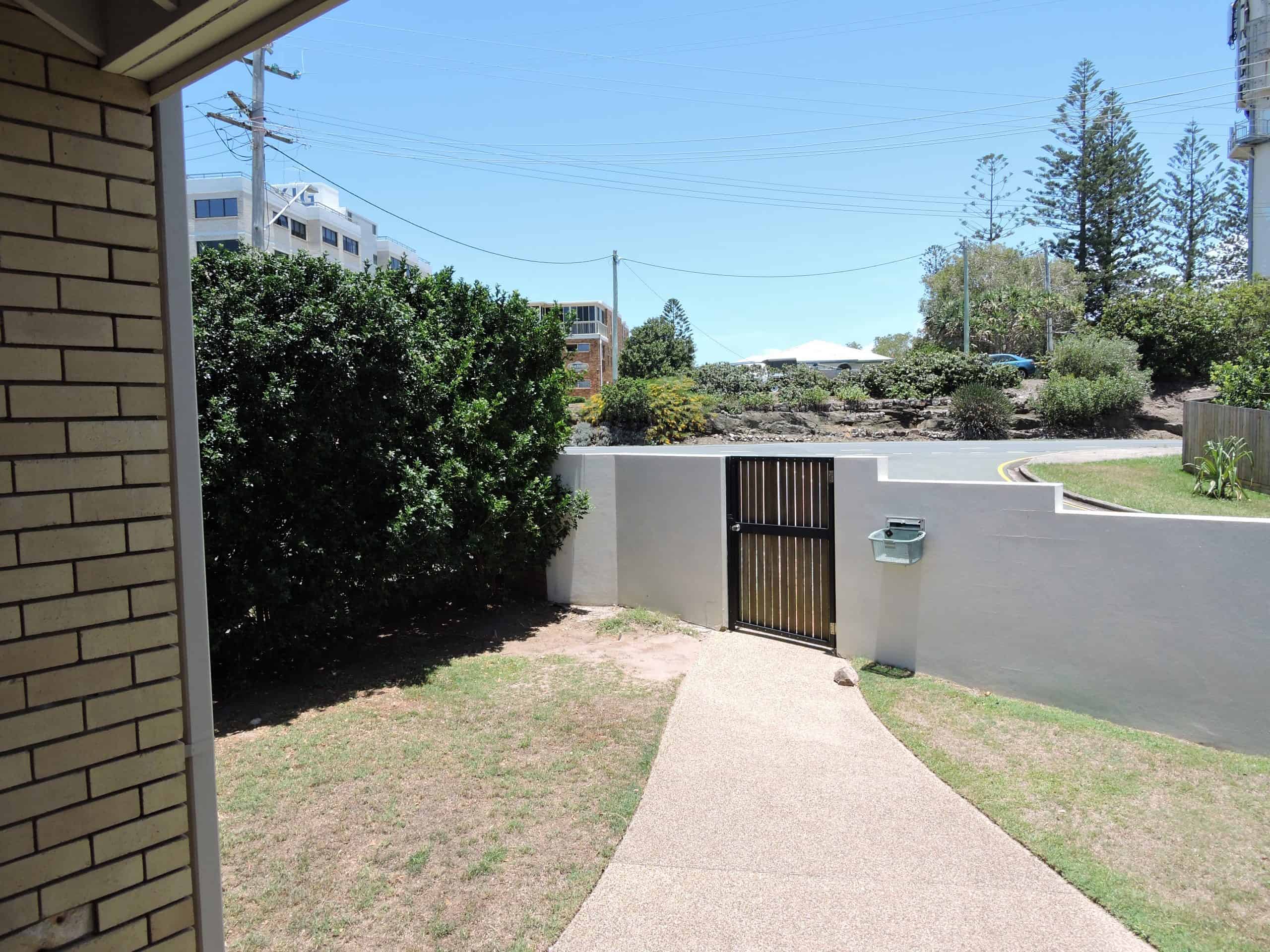
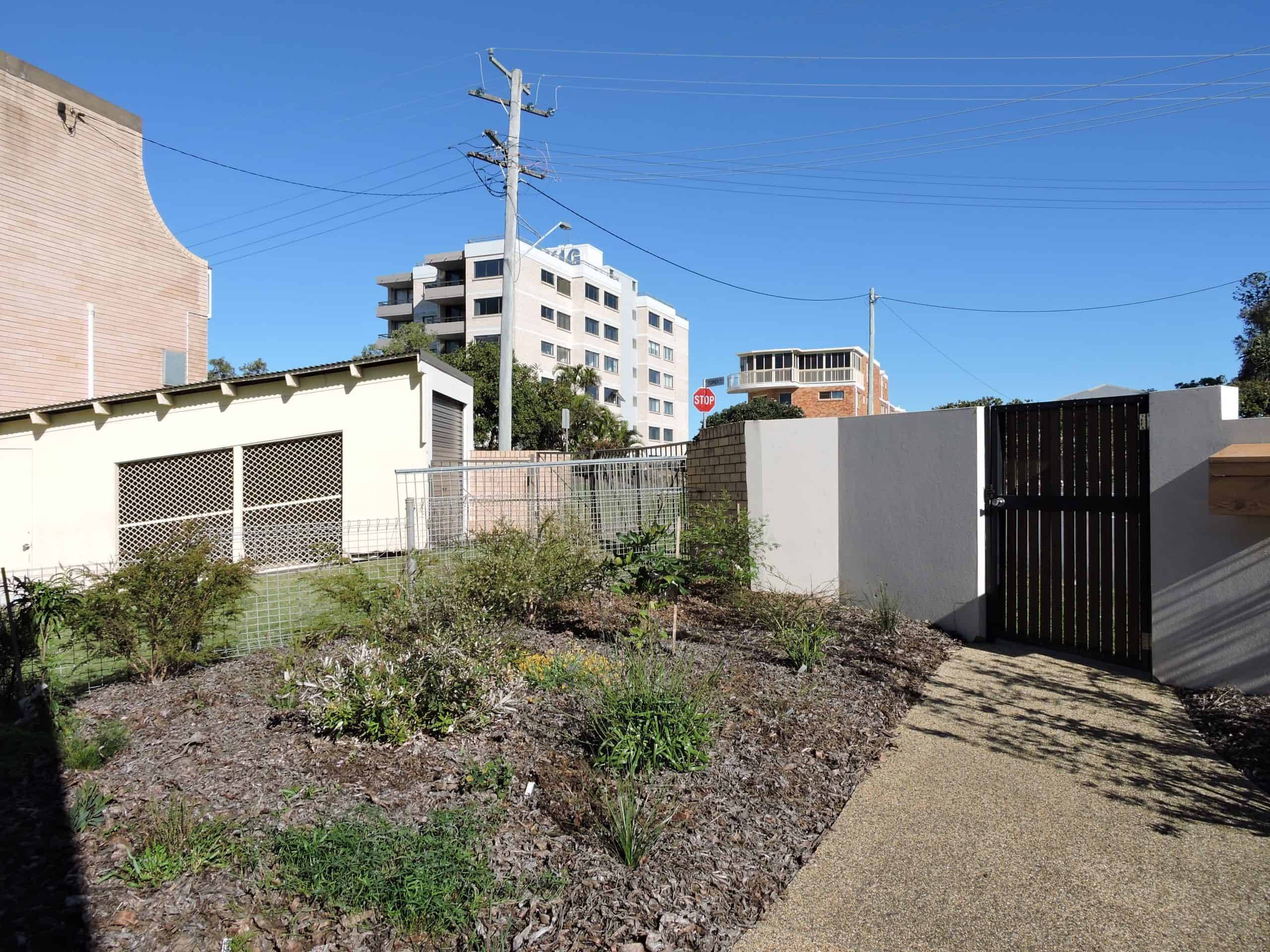
Starting out with a yard that Jenny described as ‘sterile,’ where only a small selection of exotic species grew, they have seen an inspiring transformation since planting local natives and installing a bird bath under a Banksia tree (Banksia integrifolia). Today, a diversity of native birds such as Blue-faced Honeyeaters, Black-faced Cuckoo Shrikes, and Little Wattlebirds are common visitors to the garden, and they hope that Black cockatoos will also visit soon.
There’s also a family of bluetongue lizards, green tree frogs, and different types of skinks that call the garden home, as well as an abundance of butterflies and native bees, with the Blue-banded bee making a regular appearance.
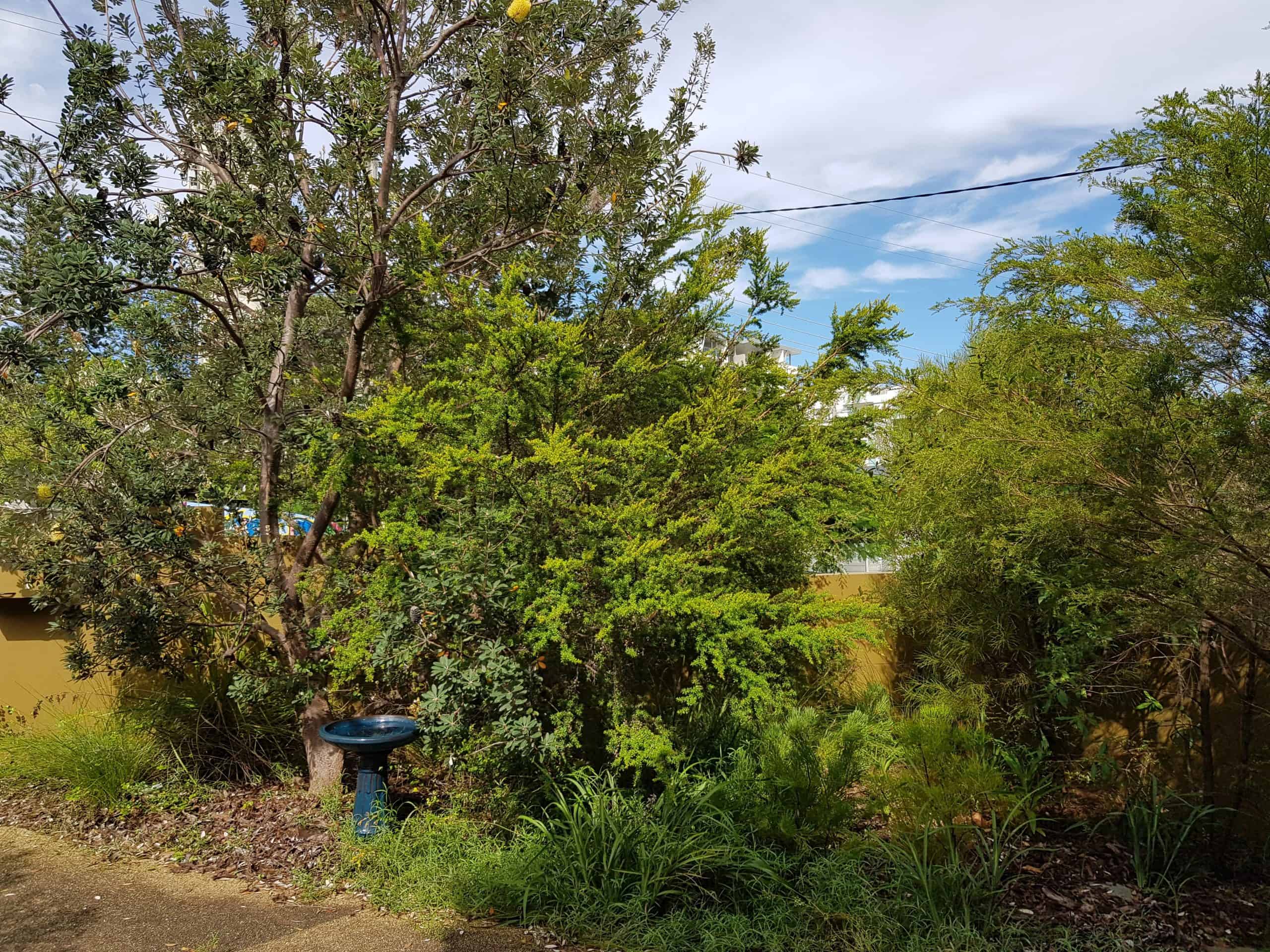
Learning and growing
To build her knowledge and understanding of local native plants and wildlife, Jenny completed a Diploma in Conservation and Land Management at Tafe several years ago, and worked and volunteered at some local native nurseries and Bushcare groups. This has given her a wealth of experience and knowledge she could apply to her own project at home.
“I had previously lived in Mons and had a property where I really got interested in native plants. Volunteering is a great way to learn about local plants and the wildlife they support.”
Starting a native garden for wildlife does not come without its challenges as well as a suite of lessons to learn along the way.
“It’s always a bit of trial and error when creating something from scratch, some things grew too big and some things just didn’t survive.
“Our Native hibiscus (Hibiscus splendens) grew too big so we removed it, and we had to remove a few other species for this reason too. So we replaced them with things that did work over time, or sometimes we moved things around.”
Tips for new Gardeners for Wildlife
In terms of offering budding new gardeners for wildlife some tips if they are just starting out, Jenny encourages people to really think about the design of the garden first.
“Because we have a path going through our yard, I wanted the taller plants along the boundary rather than along the path so that when we were looking out into the garden, we were looking at the low growing species first all the way up to the tall stuff. That way we get to enjoy the view of everything happening in the garden rather than a wall of trees.

“Leaving it a bit messy is important too, logs and fallen leaves are important refuge for lizards and other small animals.

“If you’re starting out, just give it a go. Building our native garden has been such a great project, it’s so exciting to look out and see what we’ve created and the life that’s come in, especially the butterflies. Even though it’s a relatively tiny space, it feels so much more full of life.”
Jenny will be offering an open garden tour of her Garden for Wildlife later in the year. Keep an eye on our calendar for up and coming events to get involved in.

